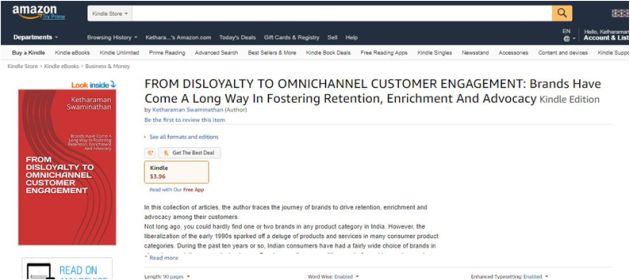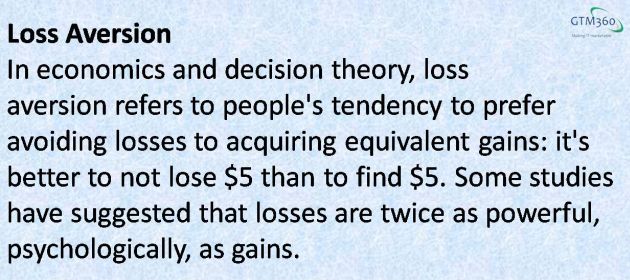Every now and then I come across a techie or two who complains that overselling by their sales people is making their job of creating a satisfied customer harder.
For example, take this OP on Quora, who asks:
These guys should realize that there’s a big difference between overselling and aspirational selling.
 Overselling is selling something and not delivering it.
Overselling is selling something and not delivering it.
Aspirational Selling is selling to aspirational goals of the customer, with a proven track record of achieving those goals for other customers in the past, and every intention of achieving them for the said customer at present.
Aspirational selling is a common practice in the software industry.
Take office automation software.
It’s widely believed that customers use only 30–40% of features in Word, Excel, etc. Despite that, Microsoft has been releasing newer versions of Office with more functionality for nearly three decades.
This approach has worked because users have always craved for more features, whether they use them or not.
Microsoft didn’t stop developing future versions of Office because customers were not using 70% of the previous versions’ functionality. Instead, it addressed the aforementioned trait of consumer behavior by releasing a new version almost every two years during the 30 year lifetime of MS Office. And the rest is history.
(For a deep dive into this topic, see my blog posts SaaS Will Change The Outcome Of The Bloatware Versus Light Apps Debate and Introducing “Multiply UI” To Solve The Software Industry’s 95% Problem).
Now take enterprise software. Aspirational selling is even more common here.
Consider the following ad from ERP leader SAP.
The copy drives prospective customers to aspire to become a world-class company (like Adidas) by buying SAP.
Potential buyers of ERP, CRM, CBS, EBPP, LMS, and so on, already use a “system” to automate the business processes supported by these products. The basic nature of many of these business processes hasn’t changed radically. A new software cannot drastically change what is being done. A prospect buys a new enterprise software product because they aspire to improve how things are done. Therefore, aspirational selling is du jour in enterprise software.
Let’s take invoicing as an example. Whether a company sells goods or services, uses offline, online or omnichannel, deploys ATL or BTL tactics to drive sales, it always raises an invoice against a sale. The basic business process has remained unchanged in the history of business.
To generate an invoice, a company can use a range of “systems” like pen and paper, calculator, Excel, or point billing software.
And most companies considering an ERP are using one of these systems already.
Why would they want to buy an ERP? Is it to generate some “gold coated” invoice? Surely not. It’s to achieve one or more of the following goals:
- Cut operating costs by harmonizing the invoice process / template across all business units, offices and factories
- Compute revenues at SBU and enterprise levels in realtime
- Support manifold increase in invoicing volumes without a proportionate increase in accounting headcount
- Gain visibility into inventory across all stocking points
- Prevent stock-outs and resultant loss of revenues by triggering stock transfers from one warehouse / store to another
These are aspirational goals because they seek to raise the company to the next level of revenues, profits and customer experience. They can’t be achieved with the company’s existing point systems, let alone Excel /pen-and-paper invoicing solutions. Ergo customers buy enterprise software.
Therefore, enterprise software vendors need to sell their software to fulfill those aspirations.
These techie versus sales conflicts and accusations of overselling start when the aspiration rubber hits the reality road.
Once the vendor receives the order and its tech team kicks off the implementation, many unforseen challenges crop up at the customer organization e.g. interdepartmental politics, disjointed data structure across operating units, differing regulations across factories, inability of business users to dedicate too much time on the project, lack of top management bandwidth, and so on. Pushback begins to change.
As Oracle Senior Vice President of North America Application Consulting Group Beth Boettcher says in Wall Street Journal,
while … companies (are) initially are in favor of adopting industry best practices…, resistance inevitably surfaces when the project gets into the design phase.
Before the deal is won, these challenges are either unforseen or appear minor. Employees pointing them out are panned as pessimists and removed from evaluation committees. Ergo they don’t come in the way of sales bagging the deal.
Which is why aspirational selling is practice du jour in software.
And it’s not only me.
AMR Research, the onetime leading supply chain research firm, once quipped:
“2nd Law of Software Marketing: Don’t let the product come in the way of the story.”
(Before you ask, the research firm that was subsequently acquired by Gartner didn’t propound a 1st Law of Software Marketing!)
Have you heard anyone say "Software is only a tool" when an ERP implementation succeeds?
— GTM360 (@GTM360) November 11, 2015
During the course of the implementation, the aforementioned challenges prevent invoice harmonization i.e rollout of a single, common invoicing process / invoice template across the whole enterprise.
The customer has two options at this point:
(A) Keep the implementation on hold until these issues are resolved
or
(B) Recalibrate the scope of invoice harmonization to a subset of the operating units, and move forward with the implementation according to the original schedule.
If the customer selects Option A, the go-live deadline will be missed but invoice harmonization will be accomplished across the entire company upon go-live. There’s no aspirational selling or overselling.
If the customer selects Option B, the deadline will be met but certain features will be pushed out to the second phase. But there’s still no overselling, because, had the customer selected Option A, the tech team could very well have implemented the invoice harmonization functionality, as it has done for other customers in the past.
A savvy tech team helps the customer select the right option under the prevailing circumstances and optimizes the implementation for the given situation. To quote Oracle’s Beth Boettcher from the aforementioned WSJ article,
The key is finding the right balance between adopting those modern practices and preserving what’s truly unique to (the customer) … company.
Being able to find the right balance is the key for techies to create a satisfied customer. Not whining about overselling.
UPDATE DATED 19 JANUARY 2022:
Going by the following stat, looks like techies have stopped whining and have made huge strides in finding the right balance!
%age of Cos that rated their ERP project a success:
* 2015: 58%
* 2019: 88%.Key Reason for Sharp Increase: "To avoid reputational damage coming from failure, cos redefine success as whatever they get." Now you know why aspirational selling works. https://t.co/fKX1hjD4t1
— GTM360 (@GTM360) April 16, 2020



